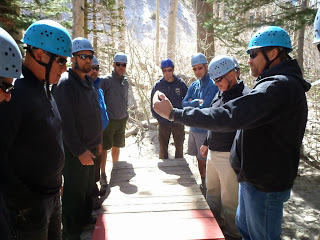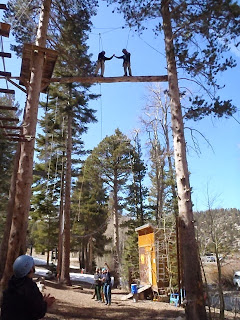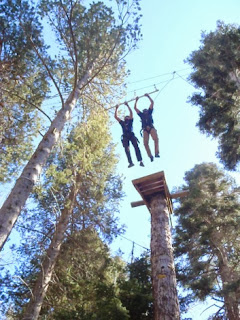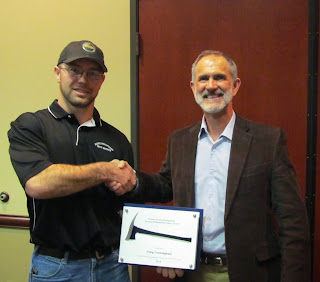
During the spring of 2013, the Carson City BLM fire staff got together for a day on the Project Discovery's Ropes Challenge Course before the fire season got under way. The day started with introductions and a safety briefing focused on working together and spotting each other through the course. We performed a couple of activities focused on identifying how we worked together as a group before we moved to the low course.

The low course consisted of obstacles no more than 3-4 feet off the ground and each of the obstacles required all of us to support each other in order to successfully navigate the challenge. The low course was particularly insightful because no individual effort could achieve success. As a matter of fact we, quickly discovered that if any one person tried to do it on their own the whole group failed. We had to work hand-in-hand to overcome the obstacles. After we had completed each component of the course, we would sit down as a group and go over what we had learned, building a "tool box" to take forward into the more complex parts of the course.

After lunch, we moved onto the high course which consisted of belaying our teammates as they climbed up onto complex balancing and even jumping maneuvers far above the ground. This part of the course was more focused on the group supporting individuals to push the boundaries of their comfort zones and on working as smaller teams to navigate more difficult problems.

This was an excellent learning opportunity for the Carson City fire staff that gave us insight into how we worked together, the importance of the team, and how we could support our peers as they overcame challenges. The tool box that we developed as the day progressed highlighted our strengths and I believe it gave us some valuable lessons that we took into the workplace and into the 2013 fire season.
*************************************************
Thanks to the Carson City District BLM Fire Staff for this From the Field for the Field submission. This blog entry is not an endorsement of the vendor. For more information on this leadership event, contact Shane McDonald, Carson City FMO. All photos are courtesy of Carson City BLM Fire.
















